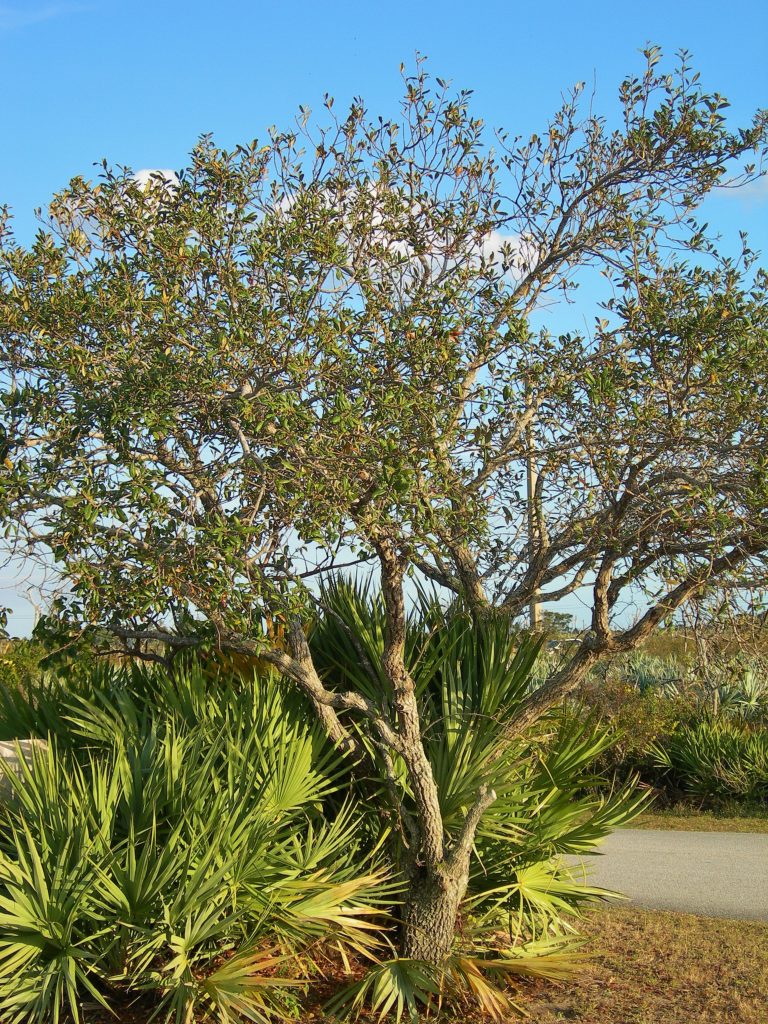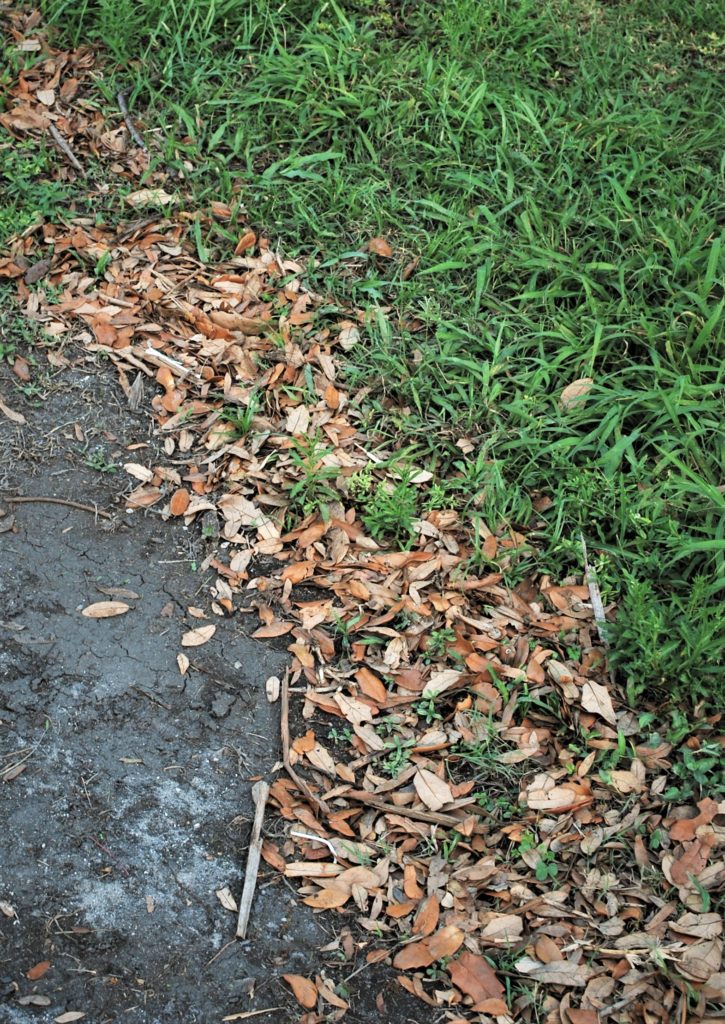
Dear Carol,
We are so curious – what was the reason for most of the oak trees that lost their leaves, looking dead, and then getting small clumps of very green leaves here and there that many of us thought was mistletoe? Now the trees are just about back in their everyday green glory.
Thanks,
Barbara
Many things can cause oak trees to lose their leaves, including weather, insect or fungal pests, lighting strikes, over-watering, drought, changes in the soil grade from construction activities, and intentional or unintentional herbicide/pesticide applications.
However, the most likely cause of the bare trees Barbara describes is a natural phenomenon. Both Live and Laurel Oaks in our area are not evergreen but semi-deciduous, which means they drop their leaves, sometimes all of them at once or just a few at a time, and replace them quickly. This leaf fall happens during the fall and spring seasons as the trees replace the old leaves with new ones.
Florida native oak trees are variable in form, size, and shape. The two common species found growing in Florida are Laurel and Live Oaks. They are found growing in natural areas and favored as landscape, street, and park trees. Oak trees provide shade and a sense of community and are a home and dinner table for many wildlife types.
Live Oaks, when mature, are usually wider than tall, while Laurel Oaks are most often taller than wide. The Live Oak’s bark is deeply furrowed, while that of the Laurel Oak is dark brown and not as deeply furrowed. It can be challenging to identify oak trees to species because they naturally cross-pollinate and produce hybrid offspring with both species’ characteristics.

Oak leaves are as variable as the trees. Live Oak leaves tend to be smaller than Laurel Oak leaves, and they change with the age of the tree. Generally, Live Oak leaves are leathery with dark green upper surfaces and are a lighter green underneath. They often have edges that roll down, so the leaves resemble a flipped canoe. Occasionally, when young, there are coarse teeth near the leaf tips.
Laurel Oak leaves are thinner than those of a Live Oak. They are bright green and elliptical with rippling margins. Occasionally Laurel Oak leaves have a few teeth and can be very broad in shape. Often trees that are hybrids have characteristics of both the parent species.
Leaf drop from Live and Laurel Oaks is a normal if bothersome occurrence. Collect the leaves; they are garden gold, use them as mulch and in compost piles.
This column first appeared in the Treasure Coast Newspapers.
Leave a Reply